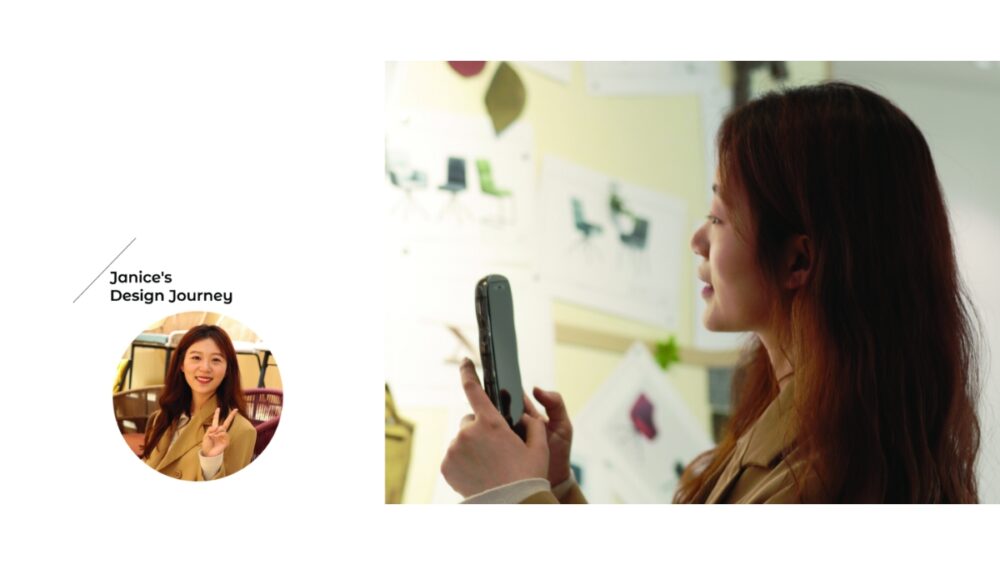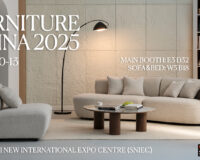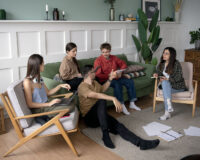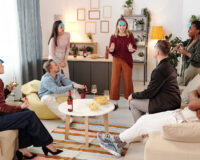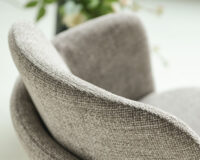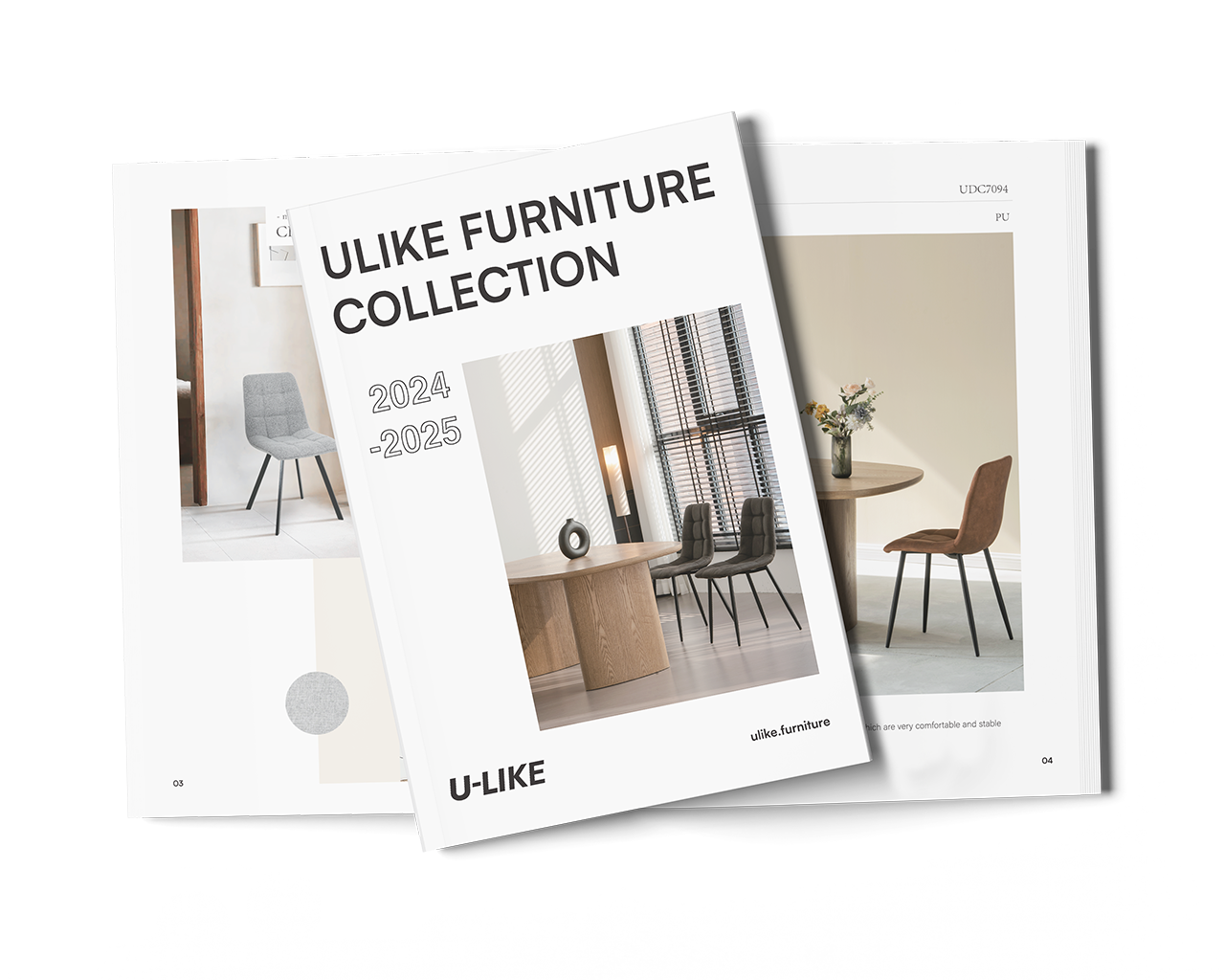Inside the Creative Process: Designing with Passion at U-LIKE Furniture
“Design is a process of unbridled self-expression,” says Janice, one of our brilliant designers at U-LIKE Furniture. Passionate about creating unique and distinctive pieces, she shares that her inspiration often stems from the most minor details in life.
Let’s dive deep into her creative process, the challenges she navigates, and the inspiration behind her stunning designs. From the intricate details to the larger picture, Janice’s journey reveals the heart and soul that goes into each piece of furniture at U-LIKE.
“Inadvertent small details in life will touch me and generate design inspiration” – Janice Hu.
1. Furniture design is indeed a fascinating field. Could you enlighten us about your comprehensive design process?
Design is an intimate exploration, combining everyday observations and aesthetic studies. It’s not just about furniture; it’s about life.
The inception of a design is a mental prototype, a concept, perhaps a dining chair or armchair. This concept then undergoes numerous transformations through 3D modeling, adapting and evolving according to market needs. This is where I discern which market will best receive the product and fine-tune details like fabric, color, leg style, and potential enhancements.
The design then goes through an evaluation by our sales team. They gauge its market viability, its potential to resonate with customers and identify any latent value within the product.
Thereon, with a positive team vote, I proceed to proofing, transferring the technical details to the factory. This includes precise measurements, information on the backrest thickness, the sponge’s density, leg form, and color, among other aspects.
Proofing offers an approximation of the final product, and from there, it’s an iterative process of discussion, modification, and refinement until a complete and perfected version emerges.
2. Could you briefly describe your personal design aesthetic? Do you believe your creative style is a reflection of your personality?
My design style veers towards a unique niche that allows me to fully express my ideas. I prioritize crafting what I perceive as excellent rather than strictly adhering to popular trends.
In essence, my style mirrors my personality. I value individuality and yearn for distinctiveness in my work. I hold my ideas in high regard but remain open to constructive feedback. Striking a balance between these two aspects is crucial for me.
3. Are your designs tailored to align with market trends, purely driven by personal inspiration, or do they anticipate and shape future trends? Can you provide some insight into your approach?
The design falls into two categories: derivative and original. Derivative designs cater to market trends. These involve modifying existing products, such as adjusting stitch patterns, leg frame designs, or changing fabric textures or colors in response to market shifts.
Conversely, the original designs I pursue are driven by pure inspiration. This doesn’t solely stem from aesthetic appreciation but often from the subtlest details in everyday life. For instance, early in my career, while designing a cabinet, an unusual dream inspired a distinctive Tai Chi-shaped circular handle.
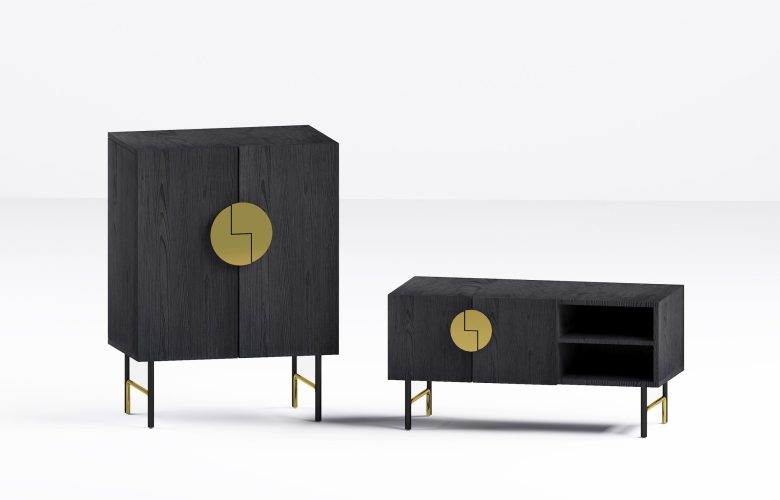
Cabinet collection with Tai Chi Pattern
Although unconventional, it was a design that was unique. Interestingly, similar designs have emerged in recent years, validating my concept.
In summary, my designs reflect market responsiveness and personal vision, ultimately striving for distinctiveness and originality.
4. Should you face market challenges, would you continue to pursue your uniquely inspired design approach?
Balancing the novelty of design and market acceptance is a complex issue, especially for a B2B company operating across diverse markets like ours. There’s always this contemplation – should ‘design’ solely be market-driven, or should it originate from the heart? This ambiguity can sometimes cloud our judgment.
If we purely design for the market, the product may not qualify as a niche design. However, these designs tend to perform well; they are easier to promote, more market-friendly, and stand a higher chance of becoming a hit. This conflict between personal creative expression and market appeal is a constant aspect of my design process.
5. Many of your recent designs have gained significant popularity. Did you foresee this success during their creation? How do you define a ‘hit’ in design?
Indeed, I’ve been fortunate enough to have several designs that have found great success, including the 223008-B. Initially, it had a unique handle and stitching design that was only sometimes accepted. However, by making subtle adjustments while staying true to the original concept, the product gained considerable popularity, especially in the German market. Often, the piece may turn into a’ hit product’ during the design process or when an idea comes to me.
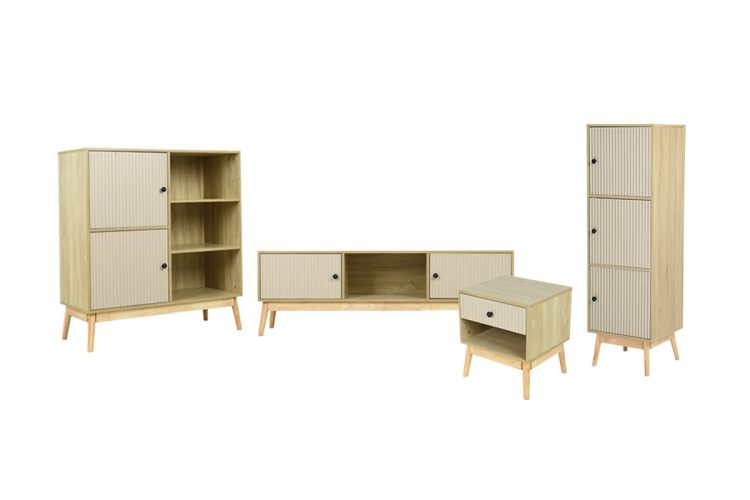
Board family Design by Janice
A ‘hit product’ combines niche design elements with a broader appeal that the market can embrace. It’s not always the designer’s favorite, but it’s undoubtedly the one the market gravitates towards. However, a designer’s contribution to a product becoming a ‘hit’ is just one part of the equation. Other significant aspects include the presentation from the factory, the product’s cost-effectiveness, and its inherent value.
I strongly believe in not compromising on raw materials to cut costs. In my design philosophy, raw materials are fundamental factors that directly influence a product’s comfort and overall appearance. Cutting costs in this area tends to degrade the quality, and that’s not an option. What I find incredibly gratifying is that customers are willing to pay a premium for well-designed products, affirming the value of good design.
6. From a purely creative perspective, disregarding sales metrics, which of your recent designs would you consider your top work and why?
Indeed, if I set aside sales performance and consider only personal affection, my first design – the blue cabinet – holds a special place in my heart. This creation resonates with my deep admiration for Scandinavian hues, particularly the unique blue we custom-mixed in the factory. The design language of this cabinet is distinctive – the doors are not traditionally even but present a staggered effect with a height difference of a centimeter.
Initially, the design didn’t feature handles, as it was easy to open without them, but I later added two black handles to visually balance the piece. The handles are like intriguing eyes on a face, giving the cabinet a touch of whimsy. Moreover, the inclusion of individualized, linear aesthetics within the design fabric of this piece is why, among my recent works, the blue cabinet shines as my favorite.
7. Like many furniture designers, do you believe that design is an avenue for self-expression, aiming for the emotions within a piece to be fully appreciated? Does this resonate with your design approach?
Indeed, I resonate with this sentiment – design is genuinely an unbridled expression of self. As a furniture designer, nurturing an idea from inception to realization is akin to the joy of birthing a new creation.
Every finished product a customer selects carries a story of its genesis – an interplay of inspiration, design, modeling, and production, punctuated with the exact shape, fabric, and color adjustments. The journey is intricate and requires relentless communication, especially during the proofing phase with the factory, to ensure the precise translation of design into a tangible product.
While the final product may carry subtle discrepancies from the initial design, the nuances embody the piece’s evolution. The behind-the-scenes process, albeit invisible to most consumers, infuses each method with its unique personality and character.
8. Certainly, the journey from conception to creation can be complex. Can you elaborate on how your emotional fluctuations might influence your work?
Certainly, my emotional state often intertwines with my designs. If I’m feeling somber, it often reflects in the subdued color choices in my work. On the other hand, a positive mood often leads to an outpouring of creativity, resulting in a series of designs. For instance, what initially starts as a singular cabinet design can evolve into a collection of furniture pieces, including coffee tables and TV cabinets when I’m particularly inspired.

